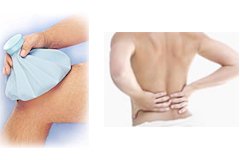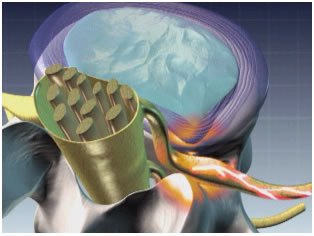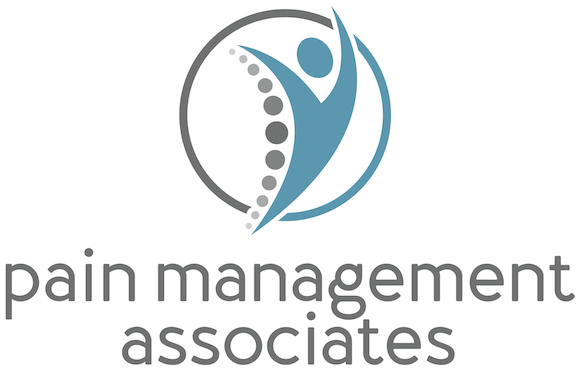MUSCULOSKELTAL DISORDERS:
 Musculoskeletal disorders (MSDs) can affect the body’s muscles, joints, tendons, ligaments and nerves. Most work-related MSDs develop over time and are caused either by the work itself or by the employee’s working environment. They can also result from fractures sustained in an accident. Typically, MSDs affect the back, neck, shoulders and upper limbs; less often they affect the lower limbs.
Musculoskeletal disorders (MSDs) can affect the body’s muscles, joints, tendons, ligaments and nerves. Most work-related MSDs develop over time and are caused either by the work itself or by the employee’s working environment. They can also result from fractures sustained in an accident. Typically, MSDs affect the back, neck, shoulders and upper limbs; less often they affect the lower limbs.
Health problems range from discomfort, minor aches and pains, to more serious medical conditions requiring time off work and medical treatment. Left untreated, the result could be permanent disability.
Musculoskeletal disorders include carpal tunnel syndrome, trapezius myalgia, epicondylitis, tendonitis, bursitis, deQuervain’s disease, rotator cuff tendonitis, thoracic outlet syndrome, intersection syndrome, ulna nerve entrapment, and trigger finger.
Treatment for musculoskeletal disorders varies depending on the type of disorder and the severity of the disorder. Some people respond to mild interventions, while others require aggressive interventive treatment.
INTERVENTIONAL PAIN MANAGEMENT:
For chronic pain sufferers, finding relief from their pain can be difficult and time consuming. Sometimes patients are shuffled back and forth between primary care physicians, specialists, and therapists of all kinds in search of a solution to their pain problems. Interventional pain management can be a useful alternative for patients who have exhausted other treatment methods without success and may be the solution chronic pain sufferers are looking for.
Interventional pain management is a discipline of medicine devoted to the diagnosis and treatment of pain related disorders. Interventional pain medicine utilizes a multidisciplinary approach, in which a team of health care professionals works together, to provide a full range of treatments and services for patients suffering from chronic and/or acute pain.
The goals of interventional pain management are to relieve, reduce, or manage pain and improve a patient’s overall quality of life through minimally invasive techniques specifically designed to diagnose and treat painful conditions. Interventional pain management also strives to help patients return to their everyday activities quickly and without heavy reliance on medications.
CHRONIC PAIN MANAGEMENT:
Over 13 million Americans suffer from chronic pain. Pain so intense that they find it difficult to work, sleep or maintain a satisfying quality of life. Is this happening to you or someone you know? If so, we can help.
Chronic pain is defined as pain that continues for longer periods of time (usually 4-6 months) as a result of an injury, surgery, or medical illness. Acute pain is pain of a short, limited duration, which often goes away with the healing process. Treatments for acute and chronic pain are often quite different.
Pain management at Pain management Associates, Inc. involve a multidisciplinary approach to treating chronic pain. Since the degree of pain varies from person to person, your treatment plan will be tailored to your specific needs and circumstances. Treatment may include a single approach or a combination of medications, therapies, and treatments.
Our primary goal is to help you manage your pain and resume a more productive life by stopping pain from managing you.
ELECTRODIAGNOSTIC MEDICINE:
Electrodiagnostic testing evaluates muscle symptoms that may result from injury or disease to either nerves or muscles in the body. Symptoms can include muscle pain, weakness or numbness.
There are two types of electrodiagnostic testing that are commonly used: electromyography, or EMG, and nerve conduction studies. These tests analyze the electrical activity taking place in the nerves and muscles.
EMG tests muscle activity; it involves inserting a needle through the skin and into the muscle. The needle records electrical activity in the muscle as the patient relaxes then contracts the muscle. When a normal muscle is at rest, there is no electrical activity; when the muscle contracts, electrical activity is recorded.
Nerve conduction studies are usually done along with EMG and record how nerves are functioning. During this procedure, electrodes are taped on the skin surface along the nerve pathway. Electrical signals are then sent along the pathway. Sensors record the electric activity and measure how fast the impulse travels along the nerve pathway. The results are displayed on a computer monitor and are evaluated.
Both tests are important tools in evaluating injuries to the nerves or nerve roots as well as diseases of the nerves and muscles.
SPORTS MEDICINE:
The goal of sports medicine is to prevent, diagnose, and treat injuries related to participating in sports and/or exercise, specifically the rotation or deformation of joints or muscles caused by engaging in such physical activities.
The sports medicine team includes specialty physicians and surgeons, athletic trainers, physical therapists, coaches, other personnel, as well as the athlete himself/herself.
Because of the competitive nature of sports, a primary focus of sports medicine is the rapid recovery of patients, which drives many innovations in the field.
SPINE SPECIALISTS:
 A physiatrist is a Medical Doctor who specializes in Physical Medicine and Rehabilitation (also called PM&R physicians). We specialize in a wide variety of conservative treatments for the musculoskeletal system and do not perform surgery.
A physiatrist is a Medical Doctor who specializes in Physical Medicine and Rehabilitation (also called PM&R physicians). We specialize in a wide variety of conservative treatments for the musculoskeletal system and do not perform surgery.
We diagnose and treat both acute pain and chronic pain and musculoskeletal disorders. We can order and interpret all types of spine imaging (x-ray, CT myelogram, MRI, bone scan) and perform specialized nerve tests (EMG, NEV, SSEP) to help assess the location and severity of nerve damage. We commonly treat patients with any kind of back pain or neck pain, work or sports-related injuries, fibromyalgia, myofascial pain, arthritis, tendonitis, spinal cord injuries.
Treatments may include active physical therapy (exercise, stretching), passive physical therapy (heat/ice, TENS units), prescription medications, massage therapy, and interventional medicine (epidural steroid injections, selective nerve root blocks, IDET).
PHYSICAL MEDICINE AND REHABILITATION:
Physical medicine and rehabilitation (PM&R), or physiatry, deals with functional restoration of a person affected by physical disability. A physician who has completed training in this field is referred to as a physiatrist. Physiatrists specialize in restoring optimal function to people with injuries to the muscles, bones, tissues, and nervous system (such as stroke patients).
Physical medicine and rehabilitation involves the management of disorders that alter the function and performance of the patient. Emphasis is placed on the optimization of function through the combined use of medications, physical modalities, physical training with therapeutic exercise, movement & activities modification, adaptive equipments and assistive device, orthotics (braces), prosthesis, and experiential training approaches.
Physical Medicine & Rehabilitation physicians may also perform electrodiagnostics which are used to provide nervous system functional information for diagnosis and / or prognosis for various neuromuscular disorders. The common electrodiagnostic tests performed by physiatrists are nerve conduction velocity studies (NCVs) and needle electromyographes (EMGs). The nerve conduction velocity study involves electrical stimulation to peripheral nerves and the nerves’ responses are measured such as onset latency, amplitude and conduction velocity. Needle electromyography requires needle electrode insertion into the examined muscles to detect the electrical potential generated from muscle fibers. Abnormal electrical potentials such as fibrillation potential or positive sharp wave detected by EMG needle indicates the presence of muscle fibers that lost the nerve supply.
The aim of treatment is to maximize the ability of the person to function optimally within the limitations placed upon them by a disease process for which there is no known cure. The emphasis is not on the full restoration to the premorbid level of function, but rather the optimization of the quality of life for those who may not be able to achieve full restoration.
